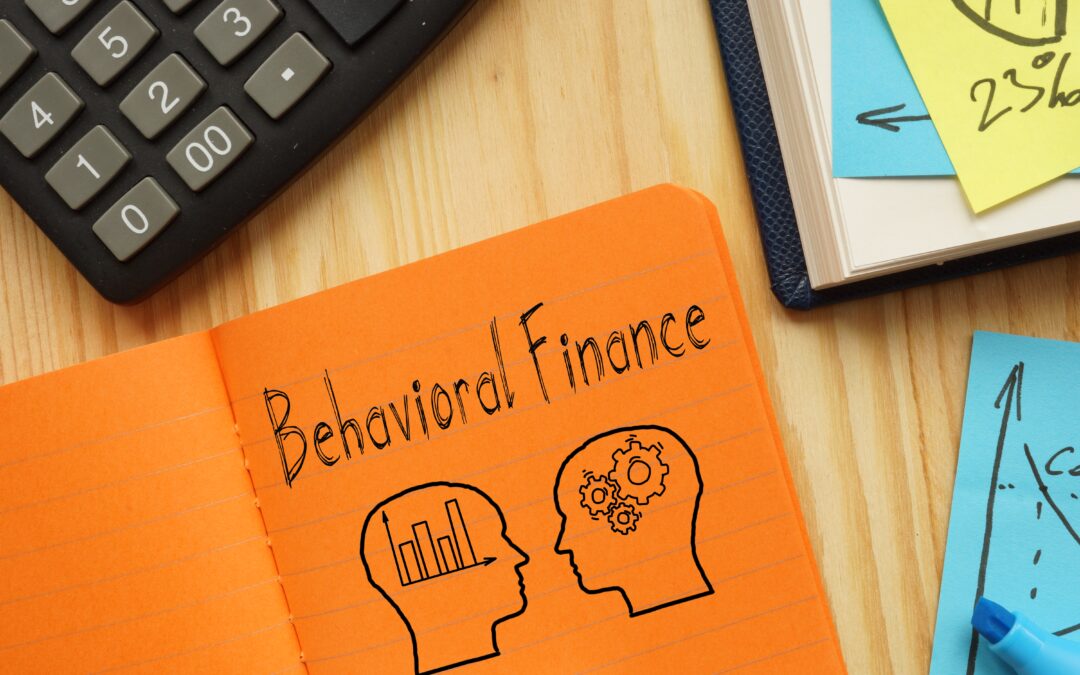What’s a bigger driver of investment performance – asset allocation or your investing behaviour?
Many people likely believe that neither of these is the biggest driver of portfolio performance, but instead that the biggest driver is security selection. There is evidence to suggest however, that security selection accounts for much less of your portfolio performance than asset allocation. According to this analysis, it’s reported that 40% of investment returns are based on asset allocation alone.
Now, if you’re an evidence-based investor and you believe in homo economicus, you’d probably stop there and base most of your investment decisions based on asset allocation alone. That’s actually fantastic – it means you’re using evidence-based investment practices.
Understanding that asset allocation is one of the biggest drivers of portfolio performance is great if you’re trying to compare investing styles (for example, active investment management styles vs. passive investment management styles) or trying to overcome “paralysis by analysis” in making the decision to invest at all, or even worse, trying to figure out the right time to invest.
Never heard of homo economicus? It’s a theory of economics1 that has historically been used in economic models. In my very humble opinion, it’s a silly idea. The theory supposes humans are “self-interested agents who seek optimal, utility-maximizing outcomes”. Translation: humans only look out for themselves, and make rational decisions based on all available information that will provide the best outcomes to reach their goals.
Does this description sound like any human you’ve ever met?
It’s important to recall that studies like the one mentioned earlier are academic research, and often study pension funds or other professionally managed money with strict rules regarding their investment policy.
As individual investors who are trying to secure our financial future, I think it’s important to remember that our investing behaviour is going to be the biggest driver of our personal portfolio performance. After all, what good is a 60/40 asset allocation if you sold your entire portfolio to cash in a market crash, and you missed a large part of the next upswing?
While that’s an obvious gimme that’s already been discussed to death, developing an understanding of your investing behaviour and from there, a behavioural strategy, can make an incredible difference in your portfolio returns and your net worth.
Human behaviour is due to the human brain, and the human brain isn’t the greatest at investing. After all, did you know that your modern brain is functionally similar, and actually just a bit smaller than that of our 160,000-year-old ancestors?2
But how does the fallibility of a 160,000-year-old brain impact your investment portfolio?
Well, did you know that investors tend to save the most money during spring and summer, and the least in winter3? Author Lisa Kramer thinks the answer to this puzzle is that our caveman brains are trying to load up our stores and fatten us up to prepare for winter. We’re just swapping nuts, seeds, and meat for money.Did you also know that during the darker winter seasons, people who experience mood changes (like seasonal depression) are less likely to take financial risks3? Your caveman brain is at it again, trying to make sure you don’t venture out into the winter storms where you could die.
Without a behavioural strategy that involves eliminating financial decision making as the seasons change, you could end up investing too conservatively and under-saving during the winters. That could have a significant and detrimental effect on your portfolio over time.
Our behaviour as the seasons change doesn’t even consider the emotions we experience from day to day. Your mood can have a profound effect on the financial decisions you make, and the mood of your peers can do the same.
For example, if you think your portfolio performance is stellar, your brain perceives this as a reward. The perception of a reward makes us take more risks and act more impulsively4. Bear in mind this is just perception, not necessarily reality. If this perception of a “reward” is activated among big groups of people, the resulting impulsive behaviour can result in a bubble4.
The tech bubble or housing bubble comes to mind.
And, get this – back in 2001 when stock exchanges still employed mostly human traders, a study was done measuring the performance of that stock exchanges index on gloomy days compared to sunny days. At this point, I’m sure it won’t surprise you that cloudy days meant lower daily returns5.
What’s the big idea?
If left unchecked, our natural mental processes are a formula for dissatisfaction.
Credit to Dr. Daniel Crosby for the above quote, from The Behavioral Investor, 2018.
The examples I’ve mentioned are not at all a comprehensive list of ways your brain makes mistakes, but an introduction to its unexpected fallibilities.
If you’re looking for great portfolio performance, you should absolutely be looking at your asset allocation. But even more importantly, you should be looking to understand your brain, with its biases and heuristics, to better understand yourself and to become a better investor.
1 Chen, J. (2021, July 31). What is homo economicus? Definition, meaning, and origins. Investopedia. https://www.investopedia.com/terms/h/homoeconomicus.asp#:~:text=Key%20Takeaways,consistent%2C%20self%2Dinterested%20goals.
2 06-11-03: 160,000-year-old skulls are oldest anatomically modern humans. (2003, June11). https://newsarchive.berkeley.edu/news/media/releases/2003/06/11_idaltu.shtml
3 Kramer, L. (2014, August 14). Does the Caveman Within Tell You How to Invest? Psychology Today. https://psychologytoday.com/ca/blog/markets-in-mind/201408/does-the-caveman-within-tell-you-how-to-invest
4Peterson, R. L. (n.d.). The Neuroscience of Investing: FMRI of the reward system. http://www.richard.peterson.net/neuroinvesting.pdf.
5Hirshleifer, D., & Shumway, T. (2003). Good day sunshine: stock returns and the weather. The Journal of Finance, 58(3), 1009–1032. https://doi.org/10.1111/1540-6261.00556

